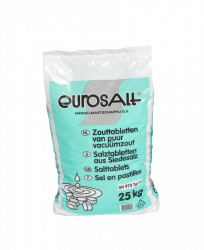Brine
Brine is water that is almost or completely saturated with salt and is used for multiple purposes:
the transport of heat (adding salt to water lowers the freezing point)
in making cheese
for the preservation of foodstuffs (this is called brining)
for ice control during the winter months
In winter, road salt is used to combat slipperiness on the roads. The mixture of salt and snow that remains on the road is called brine.
A form of ice-control is spraying with brine only.
The use of brine has several advantages over road salt. These advantages are:
it spreads better
it works quickly and efficiently down to -21°C
it's more environmentally friendly (reduces road and roadside salt damage)
it is easy to use
Another great advantage is the speed with which the smoothness can be combated with brine. Spraying brine can be done at a speed of 90 kilometres per hour, while the sprinklers with road salt can drive at a maximum speed of 30 kilometres per hour to prevent the salt from blowing away.
The large sprinklers are vehicles to which a tank with sprinkler heads is attached at the rear. Ideal for spraying large roads, terrains and terminals. For smaller and hard-to-reach areas, nozzles with a reel, hose and nozzle are used. An ideal solution for cycle paths and footpaths, which are not suitable for heavy vehicles.
Just like road salt, brine can also be used preventively. However, it is not always possible to combat slipperiness with brine alone, as up to 20 percent of salt can be dissolved in water. This can be too little when the roads are slippery because the amount of brine is too great to transport. In such cases a combination of brine and road salt is a good combination.




